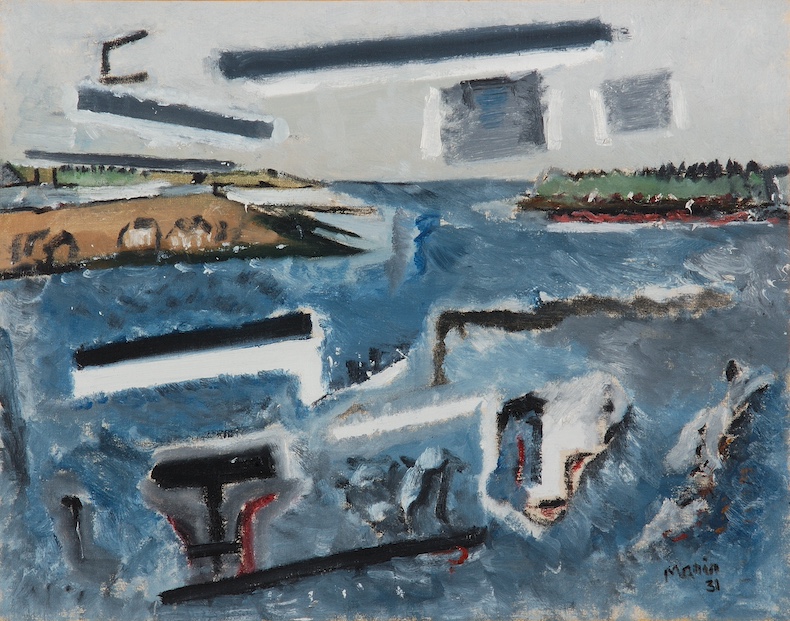
‘Four things to see’ is sponsored by Bloomberg Connects, a free arts and culture platform that provides access to museums, galleries and cultural spaces around the world on demand. Download the Bloomberg Connects app here to access hundreds of digital guides and explore compelling audio and behind-the-scenes perspectives.
Each week we bring you four of the most interesting objects from the world’s museums, galleries and art institutions, hand-picked to mark significant moments in the calendar.
For Expressionist artists, landscape was a medium through which to channel intense emotional and psychological states. Moving beyond mere representation, they used vigorous brushwork, heightened colour and distorted forms to convey their experience of nature, transforming familiar scenes into arenas of psychological drama.
Oskar Kokoschka, who died 45 years ago this week, was a master of this approach. His landscapes vibrate with nervous energy, each brushstroke capturing both the physical reality of a place and the artist’s emotional state. Whether painting the peaks of the Dolomites or the banks of the Thames, Kokoschka brought to landscape painting an intensity that influenced generations of artists. This week we explore four Expressionist landscapes, including one by Kokoschka himself.

Small Point Harbor, Casco Bay, Maine (1931), John Marin. Montgomery Museum of Fine Arts
Small Point Harbor, Casco Bay, Maine (1931), John Marin
Montgomery Museum of Fine Arts
A pivotal figure in bringing European modernism to American audiences, Marin found particular inspiration in the coast of Maine. Here, he reduces the harbour to its essential elements, using dynamic brushwork to produce forms that hover in space. Click here to find out more on the Bloomberg Connects app.

Kallmünz – Light-Green Mountains (1903), Wassily Kandinsky. Städel Museum, Frankfurt
Kallmünz – Light-Green Mountains (1903), Wassily Kandinsky
Städel Museum, Frankfurt
Created during a summer stay in the Upper Palatinate of Bavaria, this early Kandinsky shows his emerging abstract style through vigorous, mosaic-like brushwork. The artist’s determined strokes, influenced by Van Gogh, introduce a rhythmic energy to the landscape. The lower half of the composition, with its abbreviated dabs of paint, is closer to the abstract style that went on to define Kandinsky’s later work. Click here to learn more.

Tre Croci – Dolomite Landscape (1913), Oskar Kokoschka. Leopold Museum, Vienna. © Fondation Oskar Kokoschka/Bildrecht, Vienna 2022
Tre Croci – Dolomite Landscape (1913), Oskar Kokoschka
Leopold Museum, Vienna
Based on drawings made in the South Tyrolean Dolomites, this dramatic landscape exemplifies Kokoschka’s Expressionist vision. The artist gives the peaks and valleys of this mountainous terrain a distinctive emotional potency. His brushwork creates a sense of restless movement, evoking the vitality of nature. Click here to find out more.

Landscape at Cagnes (c. 1922), Chaïm Soutine. Dixon Gallery and Gardens, Memphis
Landscape at Cagnes (c.1922), Chaïm Soutine
Dixon Gallery and Gardens, Memphis
Painted during one of Soutine’s many visits to the French Mediterranean village of Cagnes, this work, the aerial perspective of which accurately depicts the region’s mountainous topography, embodies his distinctive Expressionist style. The distorted forms give the scene a dream-like quality, while the lone figure rushing beneath ominous clouds contributes to the sense of human frailty in the face of nature’s power. Click here to read more.
![]() ‘Four things to see’ is sponsored by Bloomberg Connects, a free arts and culture platform that provides access to museums, galleries and cultural spaces around the world on demand. Download the app here or scan the QR code to access hundreds of digital guides, anytime, anywhere.
‘Four things to see’ is sponsored by Bloomberg Connects, a free arts and culture platform that provides access to museums, galleries and cultural spaces around the world on demand. Download the app here or scan the QR code to access hundreds of digital guides, anytime, anywhere.
